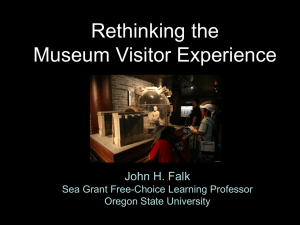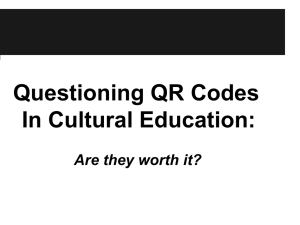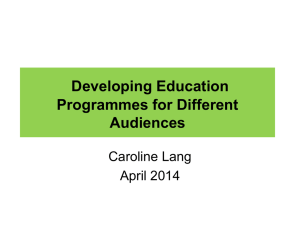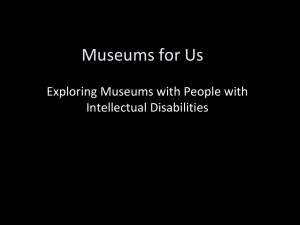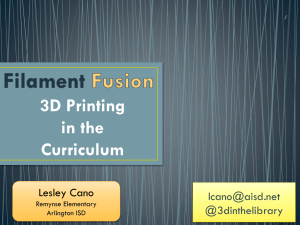Understanding Learning in and from Museums
advertisement
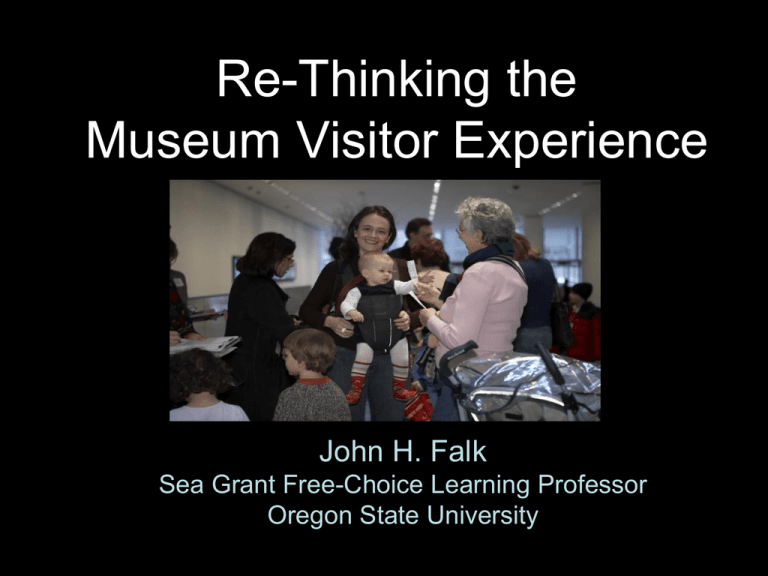
Re-Thinking the Museum Visitor Experience John H. Falk Sea Grant Free-Choice Learning Professor Oregon State University Key Questions for Today • Why do people visit museums? • What do visitors do inside the museum and why? • What meanings do visitors take away from their museum visit? • If we knew the answers to these questions, how could we use them to improve museum practice? Some Important Definitions • Museum – any of a number of free-choice learning settings such as art, history and natural history museums, zoos, aquariums, science centers, natural area parks, botanical gardens, arboretums, etc. • Identity – both internal and external – how we perceive ourselves and how others perceive us. – We don’t have just one identity but multiple identities; situated within the realities of physical and socio-cultural world. – We have both “I” identities and “i” identities. Most efforts to describe and understand museums and their visitors have begun and ended inside the “four walls” of the museum. Most efforts to describe and understand museums and their visitors have focused on PERMANENT qualities of either the: MUSEUM – content or style of exhibits VISITOR – age, race/ethnicity, visit frequency or social arrangement. Museum visitor experience extends beyond the museum’s spatial and temporal boundaries. BEFORE VISIT AFTER VISIT The museum visitor experience is not something tangible and immutable but rather an ephemeral, constructed relationship that uniquely occurs each time a person visits a museum. Big Break-Through Was Realizing Why Visitors REALLY Come to Museums • Visitors come in order to fulfill specific, personal identity-related needs. • Identity-related needs are made “visible” through descriptions of visit motivations/expectations. Identity-Related Visit Motivations An individual’s visit motivations represent a contextually-specific construct, intimately bound to desires for personal satisfaction. • Identity-related motivations are based upon the ways the public (currently) perceive the attributes and value of museums. What Happens at the Museum As we’ve learned over many years, the museum visit is shaped by the visitor’s Personal, Socio-Cultural and Physical Contexts. A visitor’s identity-related visit motivation(s) creates a basic trajectory for the visit. WHY someone comes to the museum shapes WHAT he/she finds interesting & important. Long-Term Impact of Experience • Why a person comes to the museum not only shapes what s/he does in the museum but also his/ her long-term memories and the meanings created about the experience. So Why Do People Come to Museums? Explorer I came here primarily because it interested me and I thought I’d like it.. Motivated by Personal Curiosity Motivated by Personal Curiosity Facilitator I came here primarily because others would like it or wanted to come. Motivated by Other People Experience Seeker I came here because it was an attraction or thing to do in this community; its reputation. Motivated by Desire to See & Experience Place Professional/Hobbyist I came here primarily because it relates to my work or is something I actively pursue as a hobby. Motivated by Specific Knowledge-Related Goals Motivated by Specific Knowledge-Related Goals Recharger I came here primarily because it will help me feel refreshed or focused or appreciative Motivated by Contemplative or Restorative Experience What My Research Shows: • The majority of visitors to all kinds of museums can be successfully categorized as visiting for one, or some combination, of these five identity-related reasons. Individuals with similar motivations have qualitatively similar visit experiences and longterm patterns of long-term meaning making. One Example: The California Science Center, L.A. Motivations Facilitators Explorers Professional/Hobbyist Recharger Experience Seeker Other Percent 41% 34% 7% 6% 3% 10% Long-Term Learning by Identity Implications for Practice Identity-related motivations do not answer all aspects of: * Why visitors come? * What they do in museum? * What they take away? However, a wide range of museum functions can benefit by using this perspective, e.g.: Education & Exhibt Design Marketing & Visitor Services Education & Exhibit Design: • By knowing visitor’s entering identity-related visit motivations we can better customize the museum visit experience and provide each visitor what s/he really wants. • Since the same visitors can come for different reasons on different days, it’s not about creating different exhibits & programs, it’s about creating different visitor experiences. Marketing & Visitor Services: Visitors’ identity-related motivations provide direct clues as to how the public currently perceives the benefits of our museum and why they showed up at our door this particular day. Visitors’ identity-related motivations help us understand why visitors ARE CURRENTLY coming to our museums. They also tells us why people DO NOT CURRENTLY visit.
